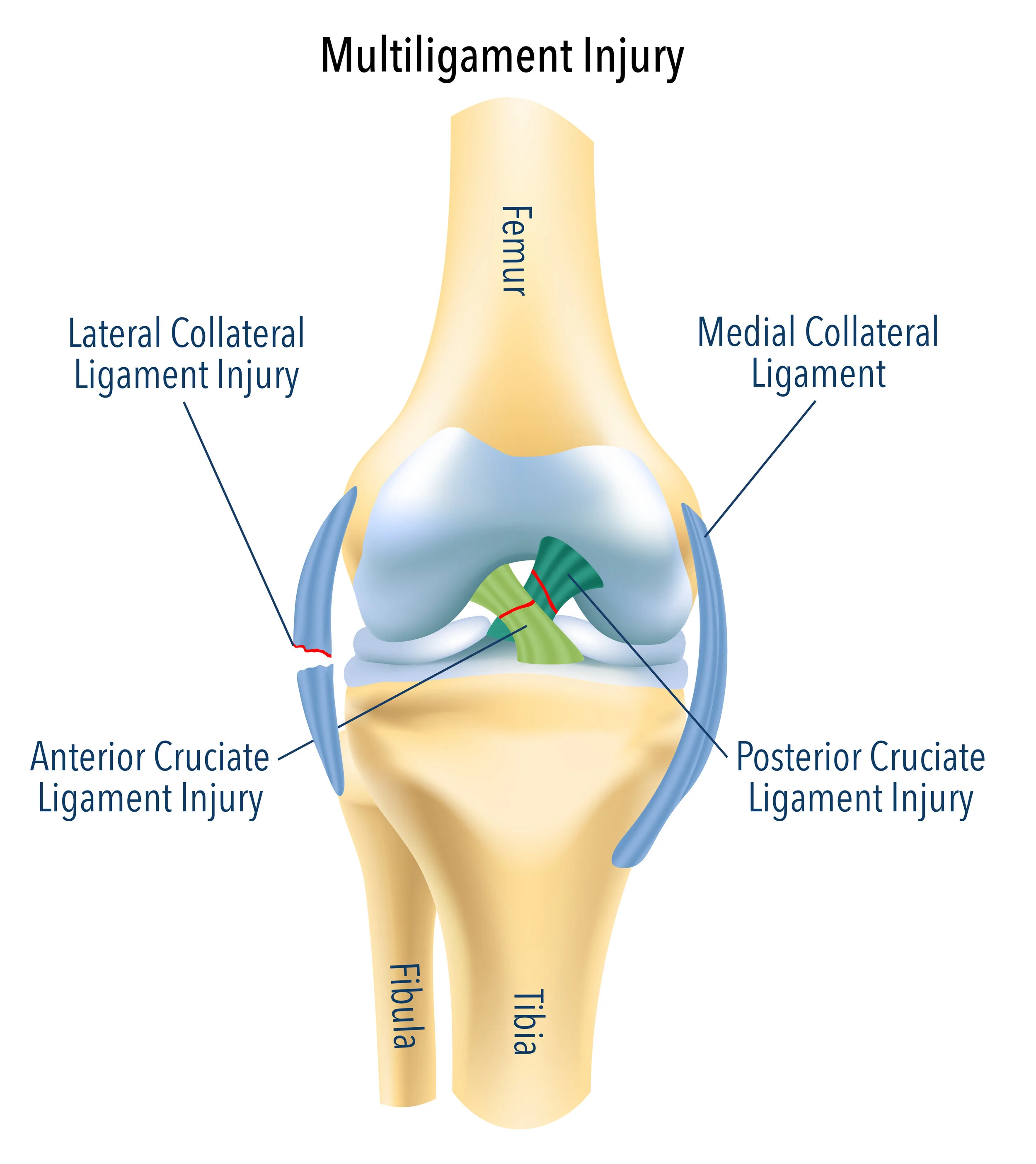Medial Collateral Ligament (MCL) Injury
What is a medial collateral ligament injury?
The collateral ligaments are located on the sides of your knee. The lateral collateral ligament is found on the outside of the knee, and the medial collateral ligament is on the inside of the knee.
These ligaments help prevent abnormal sideways motion of the knee. Although these ligaments are strong, if the knee sustains a significant sideways force from direct trauma or during activity, it may injure these ligaments.
A collateral ligament injury can occur in conjunction with an ACL tear. The medial collateral ligament is the most common ligament in the knee to be injured.
An injury to the medial collateral ligament is graded by its severity:
Grade 1 sprain: There is mild damage to the ligament, which becomes slightly stretched. However, it will still keep the knee joint stable.
Grade 2 sprain: There is moderate damage to the ligament, which remains intact but becomes loose. The ligament is partially torn.
Grade 3 tear: There is severe damage to the ligament, which is completely torn. This will make the knee joint unstable.
What are the symptoms of medial collateral ligament injury?
This injury will present as pain and swelling inside the knee. The knee may feel like it gives way during activity.
Mr Pai will examine your knee to determine its degree of instability and may request an X-ray and MRI scan to assess the nature of the injury.
How do you treat a medial collateral ligament injury?
Most medial collateral ligament injuries are treated non-surgically. Depending on the grade of the injury, you may require a brace and crutches for a period of time.
What does surgery for a medial collateral ligament injury involve?
A complete tear (grade 3) of the medial collateral injury usually requires surgical repair. An MRI scan can confirm and localize an injury to the MCL. Ultimately, the clinical examination of ligament laxity will determine whether surgery is required.
The surgery will involve repairing and re-tightening the ligament so the knee is stable again. This repair is sometimes augmented with a synthetic ligament to protect it while it heals.
Sometimes the treatment of the initial injury is delayed or the injury is managed non-operatively. If there is symptomatic instability, chronic injury patterns may necessitate a surgical reconstruction of the medial collateral ligament using a graft rather than a repair.
After this surgery, you will require a brace and crutches for some time.

